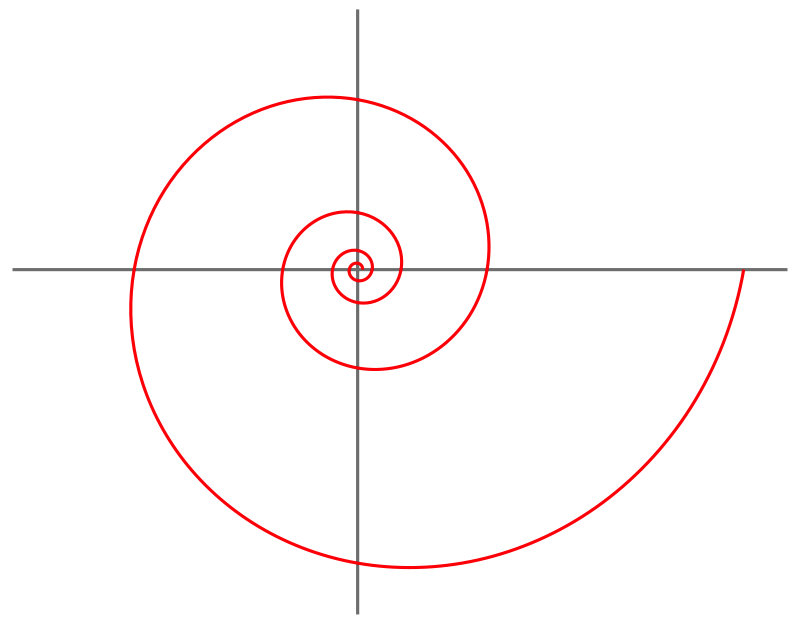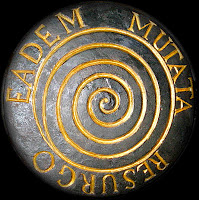
THE LOGARITHMIC SPIRAL
The logarithmic spiral was studied for the first time in 1638 by the French philosopher and mathematician Cartesio (1596 – 1650). It is the trajectory of a point moving on a ray, with uniformly accelerated motion, while the ray rotates with constant angular speed around its origin (pole of the spiral):

The property of the logarithmic spiral is the self-similarity. In practice, the pitch of the spiral, that is the distance between the successive windings of the geometric figure, does not remain unchanged, but each vector ray is longer than the previous one according to a constant ratio, which allows the curve not to change shape.
The Swiss mathematician Jakob Bernoulli (1654 – 1705) called this curve "Spira mirabilis" (wonderful Spiral). The adjective "mirabilis" refers precisely to the property of "self-similarity" which allows the curve to maintain its original shape even when it is enlarged or reduced.
Bernoulli wanted the "wonderful spiral" to be carved on his tomb with the phrase:
Eadem mutata resurgo
namely:
Although changed, I arise the same.
Unfortunately, a uniform spiral was engraved on its tombstone, as the following figure shows:

The mathematical expression of the logarithmic spiral in polar coordinates (ρ, θ) is:
ρ = abθ
where a and b are two real numbers. In particular, as “a” varies, the dimensions of the spiral and the rotation of the curve change; instead “b” indicates the winding direction of the curve:

The name "logarithmic spiral" is associated with the mathematical expression ρ = abθ that describes it, from which:
bθ = ρ/a
therefore:
θ = logb(ρ/a)